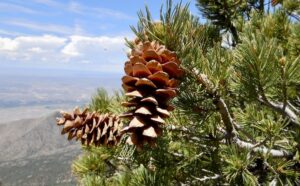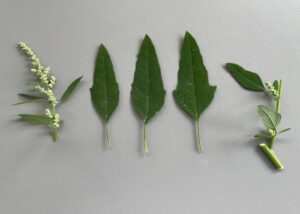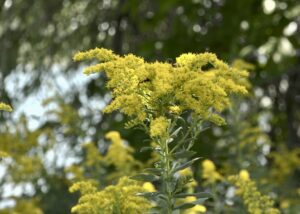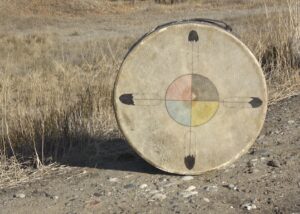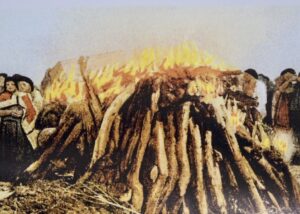Categories
Traditional LifewaysTribes
Western Shoshone, WashoeVideo Presenter
Melanie Smokey & Allen MikePine Nut Harvest
For the pine nut eaters, gathering of this tasty very nutritious staple is always proceeded by a ceremony to express gratitude. It is solemnly performed with drum, song and dance. Women dance displaying the tools of the harvest. They hold roasting and winnowing baskets, whose designs – unchanged since antiquity – are works of art, as well as marvels of functional simplicity.
A traditional Western Shoshone blessing is given before the harvest begins. The blessing reflects the appreciation of the bounty that nature provides.
The collection of pinecones requires light weight birch poles to either hook the cones from branches or knock them from the higher reaches of the pinyon trees. Pine nuts (which are technically not nuts but seeds) are then separated from the cones. The yield can vary from year to year and the labor of harvesting, cleaning, roasting, grinding and storing can take a few days on a low production year, or up to several weeks on a good year. A high production will produce enough dried, mashed pine nuts for the entire year.
Clans and regional groups within tribes often referred to themselves by names reflecting their most revered or primary food source. For instance, amongst the Shoshone, there are traditional bands known as Gweechun-dika (Buffalo eaters); Kuyudika (Bitterroot eaters); Paintwitikka (Fish eaters) and Tukadika (Sheep eaters).
Pine nut eaters were Tetadika (or Tepatitikka depending on dialect). For these people the pine nut harvest was a sacred event. It is signaled by the appearance of a particular bright yellow hue of the rabbit brush (Chrysothamnus nauseosus) flower in full bloom.
Edible pine nuts occur throughout the Rocky Mountain West from Mexico to Canada and westward throughout the arid regions of the Great Basin to California.
Of the five pinyon pines, one species: single leaf pinyon pine (Pinus monophyla), common in Arizona, Nevada and Utah is the preferred tree for harvesting pine nuts.
Amongst the Western Shoshone, Washoe, and Paviatzo Paiute, this food was central to their culture, so much so that they referred to themselves as “pine nut eaters”.
There are 7 species of pine trees that were used by indigenous people, but it is only those few known as pinyon pines, abundant in the drier southern climates that are most productive of easily processed pine nuts. These pine nuts became staple foods around which many indigenous groups structured their annual migrations and ceremonies.
Pine nuts are ground into flour. Mixed with water, this flour makes a nutritious soup. The pine nut meal is used throughout the year as a flavorful thickener in soups and stews, baked with roots and grains into bread or eaten as gruel with sweeteners like birch or maple, or even mesquite bean syrup.
Of course, roasted pine nuts can simply be snacked by the handfuls.
Dried pine nuts are 13% carbohydrates, 14% complete protein, 68% fat (mostly beneficial monosaturated), providing an almost perfect food in itself!

